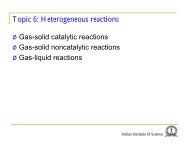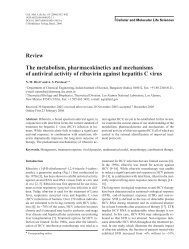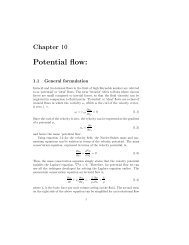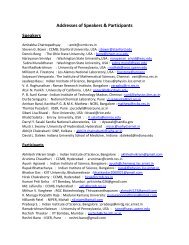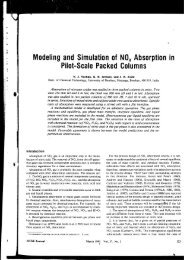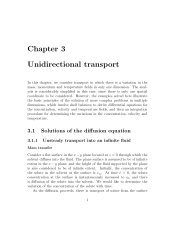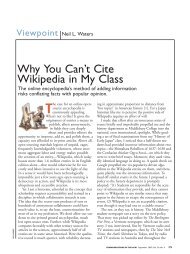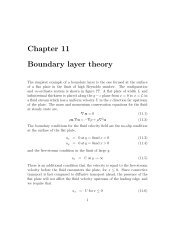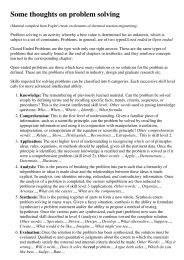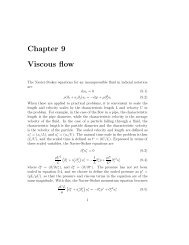Chapter 5 Steady and unsteady diffusion
Chapter 5 Steady and unsteady diffusion
Chapter 5 Steady and unsteady diffusion
You also want an ePaper? Increase the reach of your titles
YUMPU automatically turns print PDFs into web optimized ePapers that Google loves.
8 CHAPTER 5. STEADY AND UNSTEADY DIFFUSION<br />
This gives the effective conductivity<br />
K = K m<br />
(<br />
1 + 3(K )<br />
R − 1)<br />
φ<br />
2 + K R<br />
(5.30)<br />
5.2 <strong>Steady</strong> <strong>diffusion</strong> in an infinite domain<br />
5.2.1 Temperature distribution due to a source of energy<br />
Consider a hot sphere of radius R which is continuously generating Q units<br />
of energy per unit time into the surrounding fluid, whose temperature at a<br />
large distance from the sphere is T ∞ , as shown in figure 5.3. The temperature<br />
field in the fluid surrounding the sphere can be determined from the energy<br />
balance equation at steady state,<br />
∇ 2 T = 0 (5.31)<br />
Since the configuration is spherically symmetric, the conservation equation<br />
5.31 is most convenient to solve in a spherical coordinate system in which the<br />
origin is located at the center of the sphere. The energy balance equation is<br />
then given by<br />
(<br />
1 ∂<br />
r ∂T )<br />
= 0 (5.32)<br />
r 2 ∂r ∂r<br />
The solution for this equation, which satisfies the condition T = T ∞ at a<br />
large distance from the sphere, is<br />
T = A r + T ∞ (5.33)<br />
The constant A has to be determined from the condition that the total heat<br />
flux at the surface of the sphere is Q,<br />
−K dT<br />
(4πR 2 ) = Q (5.34)<br />
dr ∣ r=R<br />
This equation can be solved to obtain A = (Q/4πK), so that the temperature<br />
field is<br />
T =<br />
Q<br />
4πKr + T ∞ (5.35)



